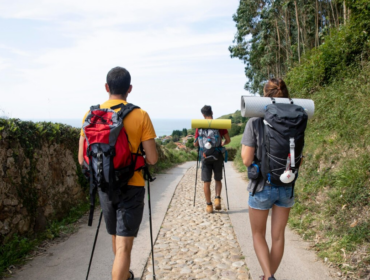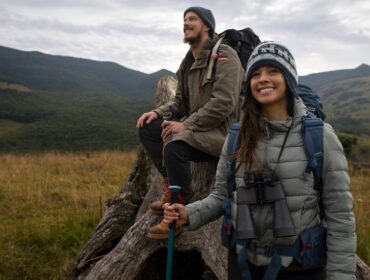2020 has been a ruff year (fur-give the pun.) The coronavirus has put a lot of group and indoor activities on paws pause. But there’s one thing the virus hasn’t canceled. Hiking is the ultimate socially-distanced activity — and it’s dog-friendly too. But you don’t want to hit the trail unprepared. Here are six tips for hiking with your dog.
1. Know your pup’s fitness level
Choose your adventure based on your dog’s fitness level. You know if Bella is super active and ready to take on some steep mountain trails. But if Max is less-than-active, you need to start slow.
If your dog isn’t ready to roll on the roughest trails, choose an easier one, and help your best friend get in shape. Keep in mind, if your dog is a short-nosed breed like a Boston terrier, she may not be as much of an athlete as a Labrador retriever or husky, and pushing her too hard may be dangerous.
2. Stay hydrated
This goes for both you and your pooch. Don’t forget the portable dog bowl! Make sure to offer your best friend a drink of cool water periodically on your hike.
The American Kennel Club says panting, a dry nose, dry sticky gums, or thick saliva can be signs of dehydration in your pooch. Also, keep an eye out for the loss of skin elasticity, vomiting or diarrhea, as well as lower energy levels. If you see signs of trouble, offer your dog some water, and head back to the car.

3. Eating green
Lots of dog owners worry when they see their pets chow down on grass or other plants. Unless you know the plant on the trail is poisonous, it’s nothing to really worry about.
Occasionally munching on grass is something your dog’s wolf ancestors did, and a little bit won’t hurt. Some of the plants known to be toxic to dogs include oleander, aloe, and the sago palm. If you aren’t sure what your dog has eaten, call the 24-hour Animal Poison Control Center at 1-888-426-4435.
4. Answering nature’s call
It’s bad manners to leave your dog’s poop on your neighbor’s lawn. It’s even worse along the trail, where it’s not just disgusting, but counts as fecal pollution, and hurts the local ecosystem.
You’ve got a few options when it comes to cleaning up your dog’s mess:
- Bag it and pack it out (you can make your dog carry it in his doggie backpack).
- Dig a hole 8-12 inches deep and bury it, but make sure you are at least 200 feet from a water source or campsite (don’t bag it before burying it).

5. Stay in control
The hiking trail is not the place to test a dog who hasn’t yet passed obedience training. For your dog’s safety, and the safety of other people and dogs on the trail, always keep your dog within eyesight.
Keep her on a leash if Daisy likes to jump up on people or gets aggressive with other dogs. And never let your canine chase wildlife or roam free.
6. What to bring
The portable dog bowl and poop bags aren’t the only necessities for your hiking trip. Booties protect sore paws if the trail is too rugged or too hot. A doggie first aid kit looks a lot like a human first aid kit but contains bandages and antiseptic ointment good for dogs. And make sure your dog’s wearing a collar with a tag, just in case you get separated.
Hiking can be the perfect human-canine adventure, if you and your pup are prepared. That means knowing where you’re going, and having the right equipment when you get there. Bring some treats for both you and Fido for the trek home when your pooch is pooped, and you’re dog tired.
Janine Macallister is a veterinarian’s assistant who loves to travel and hike and insists on taking her Siberian husky with her on all vacations. Her RV is fitted with a special seat belt harness and bed just for Dolly, who knows the rules of the road.
Feature photo by Wilfried Santer/Unsplash




